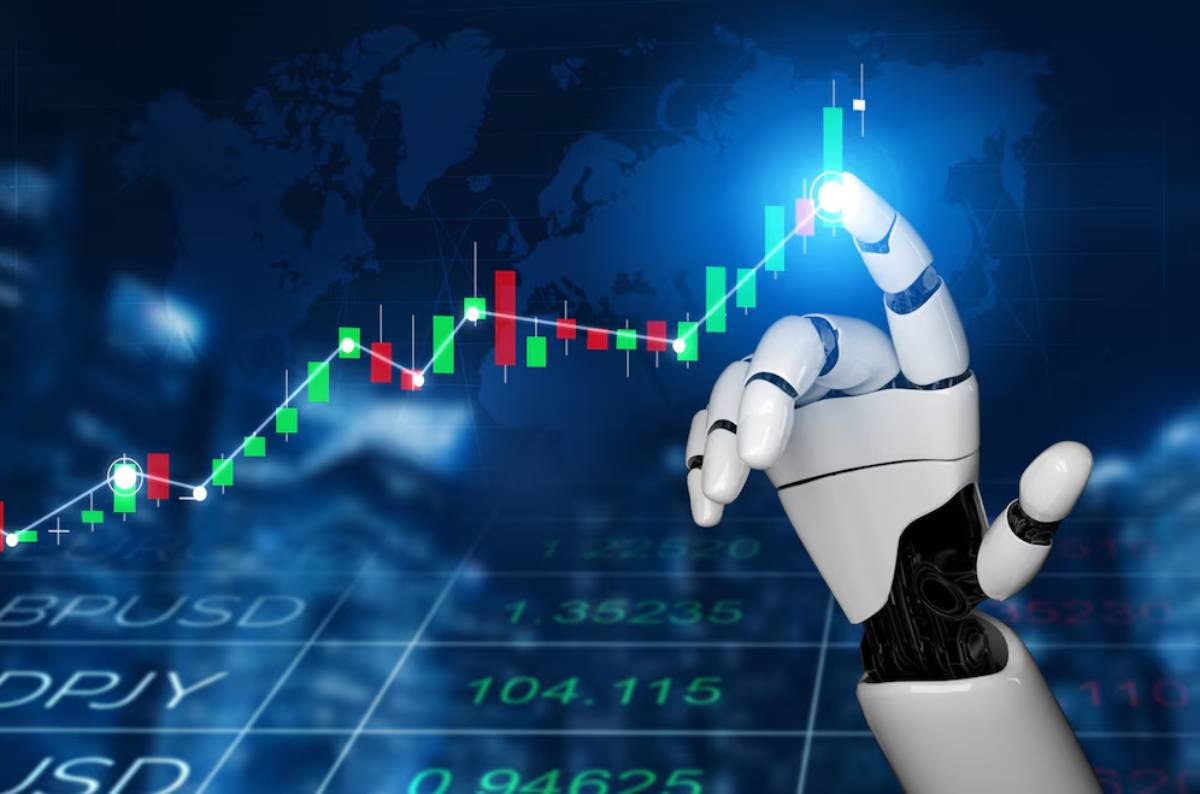
How to Use AI and Machine Learning for Stock Predictions
Artificial Intelligence (AI) and Machine Learning (ML) are revolutionising the trading game. By sifting through mountains of data and uncovering hidden patterns, they outpace human intuition. Harnessing insights at lightning speed, these technologies light the way for investors. Navigate the stock market with newfound confidence and clarity. Step boldly into the future of finance, where informed decisions are the heartbeat of success. Embrace a new era, where knowledge transforms uncertainty into opportunity.
This guide explains how AI and ML are used in stock trading, the types of models involved, and how you can start applying them—without the fluff or hype.
Pro Tip: AI tools are only as good as the data and logic behind them. Don’t rely on them blindly—use them to support, not replace, your market understanding.
Quick Guide: How You Can Use AI Tools
You don’t need to build complex models from scratch. Several platforms offer AI-based tools for traders:
- Tradytics: Provides AI-generated trade ideas and options flow analysis.
- Kavout: Uses predictive models to generate a “K Score” for stocks.
- Tickeron: Offers AI trend predictions and trading signals.
- QuantConnect: Using historical data, you build and test ML trading strategies.
Important: AI is a powerful tool, not a magic solution. Understand its strengths, be aware of its limitations, and never use it as your sole decision-maker. The best outcomes often come when human insight and machine efficiency work together
Why Use AI in Stock Trading?
Stock markets move quickly, and decisions based on outdated data or gut feelings are no longer enough. AI systems can analyse news, price history, trading volume, and even social media sentiment—all in real-time.
Benefits:
- Faster Analysis: AI processes data at speeds humans can’t match.
- Pattern Recognition: ML models identify trends not visible through traditional charts.
- Emotion-Free Decisions: Algorithms aren’t influenced by panic or hype.
- Backtesting: AI can test strategies on historical data for performance.
What Is Predictive Analytics in Finance?
Predictive analytics uses historical data and statistical algorithms to forecast future events. In stock trading, it means predicting whether a stock’s price is likely to rise or fall based on past behaviour and real-time inputs.
It combines:
- Price data
- Technical indicators
- Fundamental metrics
- Sentiment analysis
- Macroeconomic factors
When powered by machine learning, these systems constantly improve themselves as they process new data.
How Machine Learning Works in Stock Predictions
Machine learning models don’t follow fixed rules. Instead, they learn patterns from data and make predictions based on those patterns.
Common ML Models Used in Trading:

1. Linear Regression: Used to find the relationship between stock prices and influencing factors like volume, earnings, or interest rates.
2. Decision Trees: These models create a tree-like structure of decisions to predict stock movement based on variables like RSI or moving averages.
3. Random Forest: A group of decision trees combined to improve prediction accuracy and reduce overfitting.
4. Neural Networks: Inspired by the human brain, these models are good at spotting non-linear relationships. Used in deep learning for complex pattern recognition.
5. Reinforcement Learning: The system learns through trial and error by simulating trades and adapting based on the outcome. Common in algorithmic trading strategies.
Practical Uses of AI in Trading
1. Algorithmic Trading
AI-based trading bots can place buy or sell orders based on real-time signals, reducing the time between analysis and execution.
2. Portfolio Management

AI helps create diversified portfolios by analysing risk levels, expected returns, and correlations between assets.
3. Sentiment Analysis
AI tools scan financial news, Twitter, Reddit, and analyst reports to gauge public sentiment and predict potential market reactions.
4. Market Forecasting
ML models can be trained on decades of financial data to forecast short- and long-term price movements.
5. Fraud Detection
Machine learning helps detect unusual market behaviour, insider trading, or manipulation by flagging irregular patterns.
Challenges and Limitations
Despite the potential, AI isn’t foolproof. Here’s what you should watch out for:
1. Data Quality
Poor or biased data leads to flawed predictions. Accurate input is critical.
2. Overfitting
Some models perform well on past data but fail in real markets. This happens when the model is too tailored to historical patterns.
3. Black Box Problem
Some AI models, especially deep learning networks, are hard to interpret. You may not fully understand why a prediction was made.
4. Market Noise
Financial markets have random movements. AI can struggle to distinguish between meaningful patterns and short-term noise.
Key Considerations Before Using AI
- Define Clear Objectives: Are you looking for short-term trades, long-term investments, or risk management?
- Backtest Thoroughly: Run your strategy against historical data to understand its strengths and weaknesses.
- Stay Involved: Don’t outsource your entire strategy to AI. Use it to enhance, not replace, your judgement.
- Keep Learning: Financial markets evolve. So should your understanding of the tools you use.
FAQs
1. Do I need to be a programmer to use AI in trading?
No. Many platforms offer user-friendly tools. However, a basic understanding of how models work is helpful.
2. Is AI better than human traders?
AI is faster and unbiased, but it lacks human intuition. A combination of both often works best.
3. Can AI predict stock prices accurately?
No model can predict with 100% certainty. AI improves probability, not guarantees.
4. What skills should I learn to build my own model?
Python, statistics, and financial modelling are great starting points.
5. Are there any risks in using AI tools?
Yes. Relying too heavily on automation without understanding the logic behind it can lead to poor decisions.
Conclusion: Smarter Strategies Through Data
AI and machine learning have revolutionised the world of stock trading. Armed with real-time insights and razor-sharp analytics, traders can outsmart the fast-paced market. With lightning-fast execution, staying competitive has never felt so thrilling.
But let’s not forget: the true magic sparkles in your hands. Wield these tools wisely, and let your trading ambitions take flight.
Merge AI-powered insight with solid financial savvy, and watch your strategies strengthen. This harmonious blend will lay a robust foundation for your trading triumphs.


